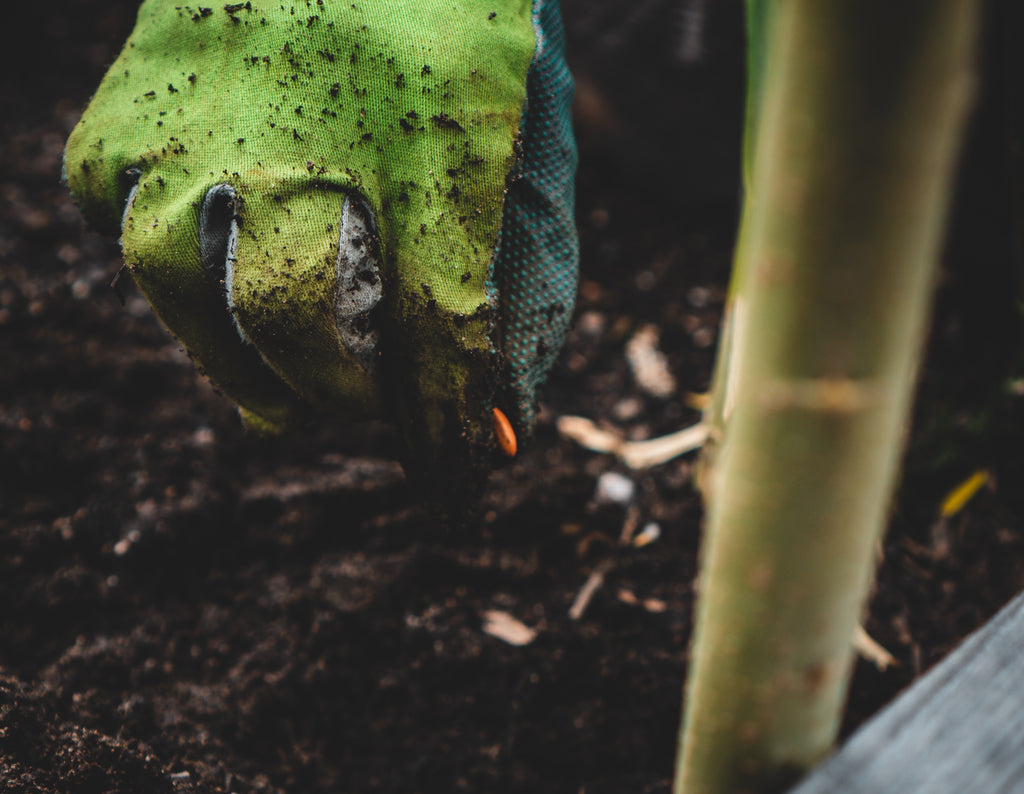We often mention direct sowing when we talk about planting certain types of vegetables. Direct sowing is a method of propagation that eliminates the need for potting soil, transplanting and plastic pots. When we say “direct sow” all we mean is to plant your seeds straight into the prepared ground soil.
Deciding when to direct sow plants depends on a few different factors. Most plants with tap roots like carrots, beets and radishes are easier to direct sow than to transplant. Sometimes we choose to direct sow plants for expediency, by eliminating the need to transplant you can save some time in the garden. Direct sowing is also a very good option if you lack greenhouse space or other appropriate infrastructure to start seeds in potting soil first.
There are many plants that benefit from cold stratification, a process which mimics the natural process of winter. You can direct sow plants that need cold stratification during the late winter in your garden instead of artificially cold stratifying them in a refrigerator. Lavender, poppies and nettles are a few plants that germinate more effectively when subjected to a cold moist period.
Furthermore, you might choose to direct sow seeds if the plants have sensitive root systems. When you transplant there is a certain amount of shock and disturbance that the seedling will go through. Cucurbits are a great example of this. Although, you use more seed when you direct sow you will end up with much healthier and vigorous plants then if you were to transplant them.
Finally, when we are planting cut-and-come-again crops and baby leaf crops like salad mix and arugula, direct sowing is the preferred method. For these crops you want the plants to be very close together for ease of harvest and to keep them from overdevelopment.
Direct sowing is an excellent way to garden. It can be easier and more efficient. In nature nearly every plant propagates itself this way. Although there are just as many great reasons to grow things in a more controlled manner it is ultimately not always necessary especially if you live in a more mild climate.
How to direct sow seeds:
- Prepare your garden soil. There are alot of great ways to prep garden beds. Your end goal should be to have an even flat surface to sow the seeds into. The soil should be free from large clumps with a loose texture and free from weeds. A few ways this can be achieved is by weeding the bed and raking, adding a layer of compost, or by tilling.
- Prepare a shallow trench in your prepared garden bed. The size of the seed you are planting will dictate the depth of the trench. As a general rule it should be about three times the depth of the seed.
- Place your seeds into the trench in a straight line. Seed spacing is different depending on the crop that you are planting. For most small seeds like carrots, lettuce and radish about an inch between seeds is appropriate. For larger seeds like corn, squash and beans three inch spacing will be good enough.
- Cover the seed with soil from the sides of the trench that you made and gently tamp down the soil over the trench.
- Mark your row with a stake so that you know where to expect the seedlings to germinate.
- Once the seeds germinate and have a set of true leaves you can thin the seedlings to whatever the crop needs. For some crops thinning will not be necessary.
Happy Planting!
Taryn Hunter
Lead Seed Coordinator, Siskiyou Seeds


Valerie
Thank you, much gratitude for your very informative news letter on good organic gardening, and simply caring for what is so good and green!